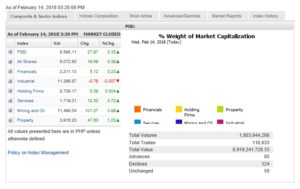The Philippines again topped the world in terms of social media usage as the number of internet users in the country hit 67 million people, according to a new report by London, United Kingdom-based consultancy We Are Social.
In its Digital 2018 report, which compiled data from various third-party sources, We Are Social said Filipinos spent an average of 3 hours and 57 minutes a day on social media sites, mainly on Facebook.
It said there were 67 million accounts on Facebook in the Philippines, matching the total number of internet users in the county. Another 10 million Filipinos were on Instagram, which is owned by Facebook.
The Philippines was ahead in terms of social media usage in a list of 40 countries. Least interested in social media were the Japanese, who spent an average of 48 minutes a day updating their Facebook status and posting pictures on Instagram.
Other heavy social media users were Brazil (3 hours and 39 minutes), Indonesia (3 hours and 23 minutes), Thailand (3 hours and 10 minutes) and Argentina (3 hours and 9 minutes). The Philippines was also No. 1 in the world in terms of social media usage in 2017.
Overall, Filipinos spent 9 hours and 29 minutes a day on the internet, based on the 2018 report. This was the second-highest in the world after Thailand at 9 hours and 38 minutes.
Apart from social media, Filipinos used the internet to watch videos on YouTube and access news sites.
The high usage comes as Filipinos still lagged behind most regional neighbors and the global average in terms of internet speed.
Using data from Ookla as of November 2017, the report said the country’s average fixed-internet speed stood at 15.2 megabits per second, below the global average of 40.7 Mbps while mobile internet speed clocked in at 13.5 Mbps, below the global average of 21.3 Mbps.
Fixed-internet in the country had improved from over 4 Mbps the previous year while mobile internet went down slightly from 13.8 Mpbs last year, according to the Digital in its 2017 report.
Overall, internet usage in the Philippines remains on a growth trajectory with seven million users added over last year. Internet penetration now stands at around 63 percent out of 105.7 million Filipinos. Moreover, more than half of the population, or 61 million, access the internet using a mobile device, the report showed.
E-commerce is another big growth area. Filipino consumers as of end-2017 spent around $2.16 billion shopping online. Bulk of these, or $642.6 million, were for travel expenses while $543 million went to electronic goods. The smallest amount was for digital music, at $12.9 million.
There were 33.8 million Filipinos who bought goods online in 2017 versus 30.3 million in 2016, according to We are Social.


